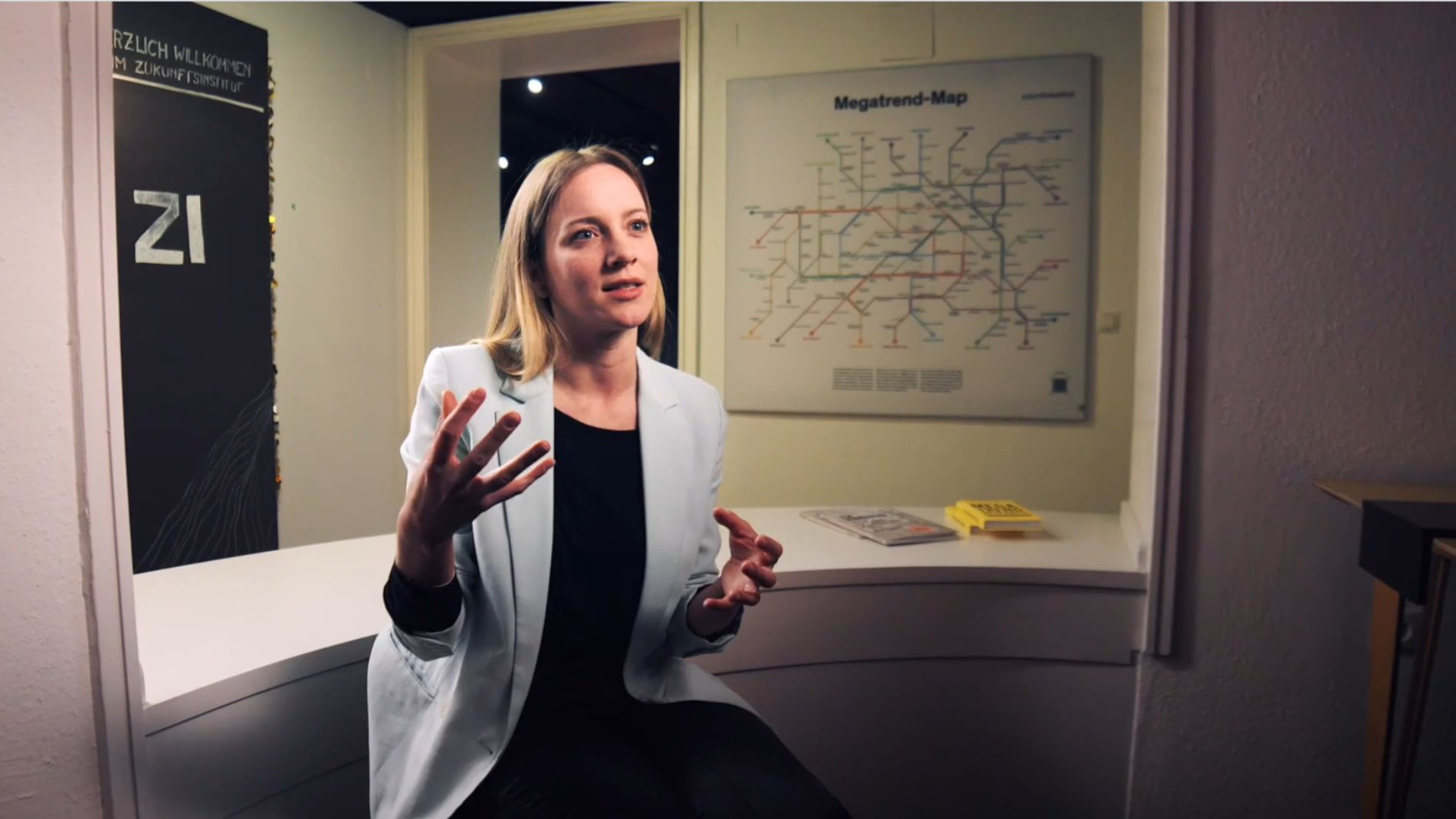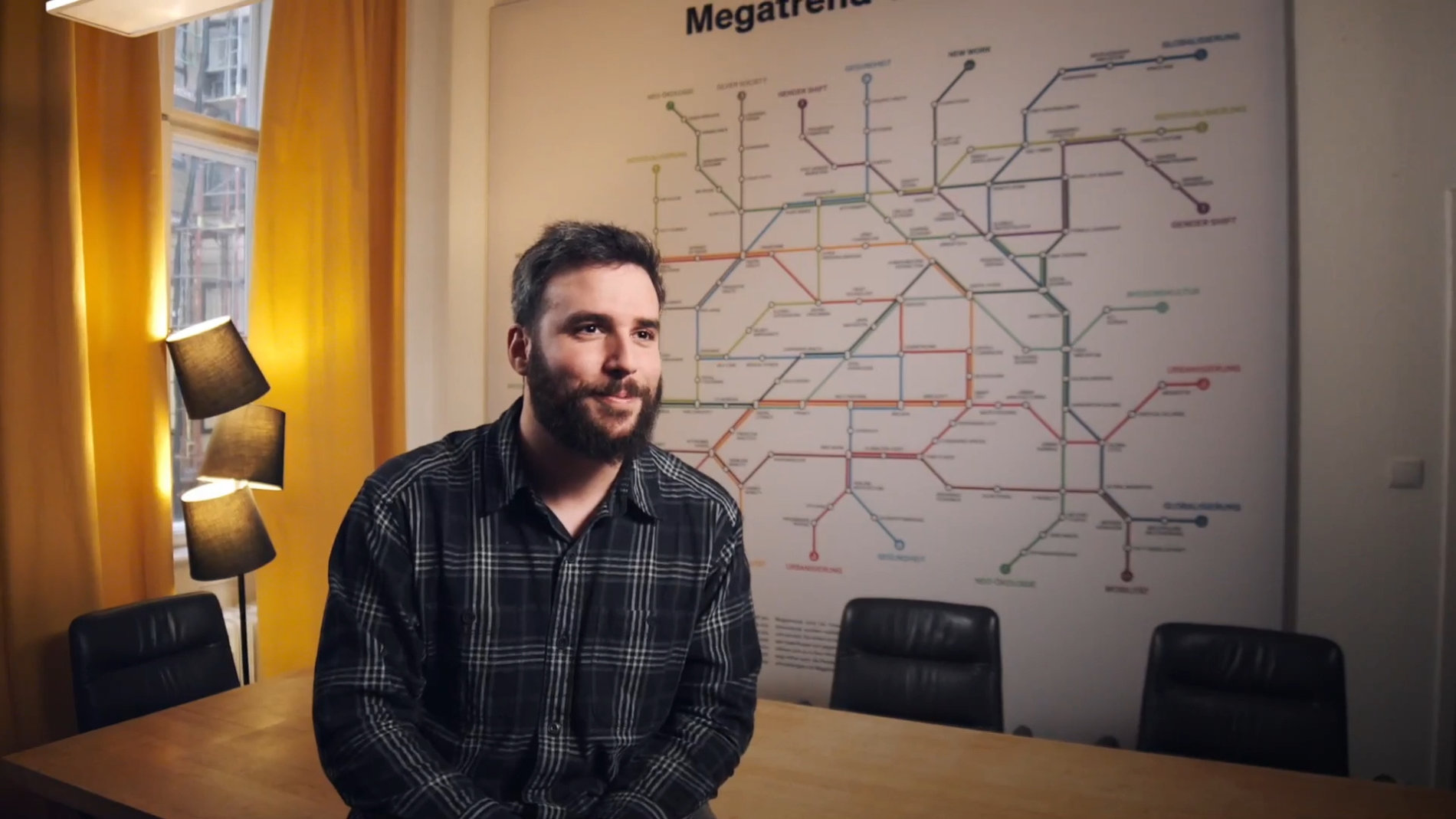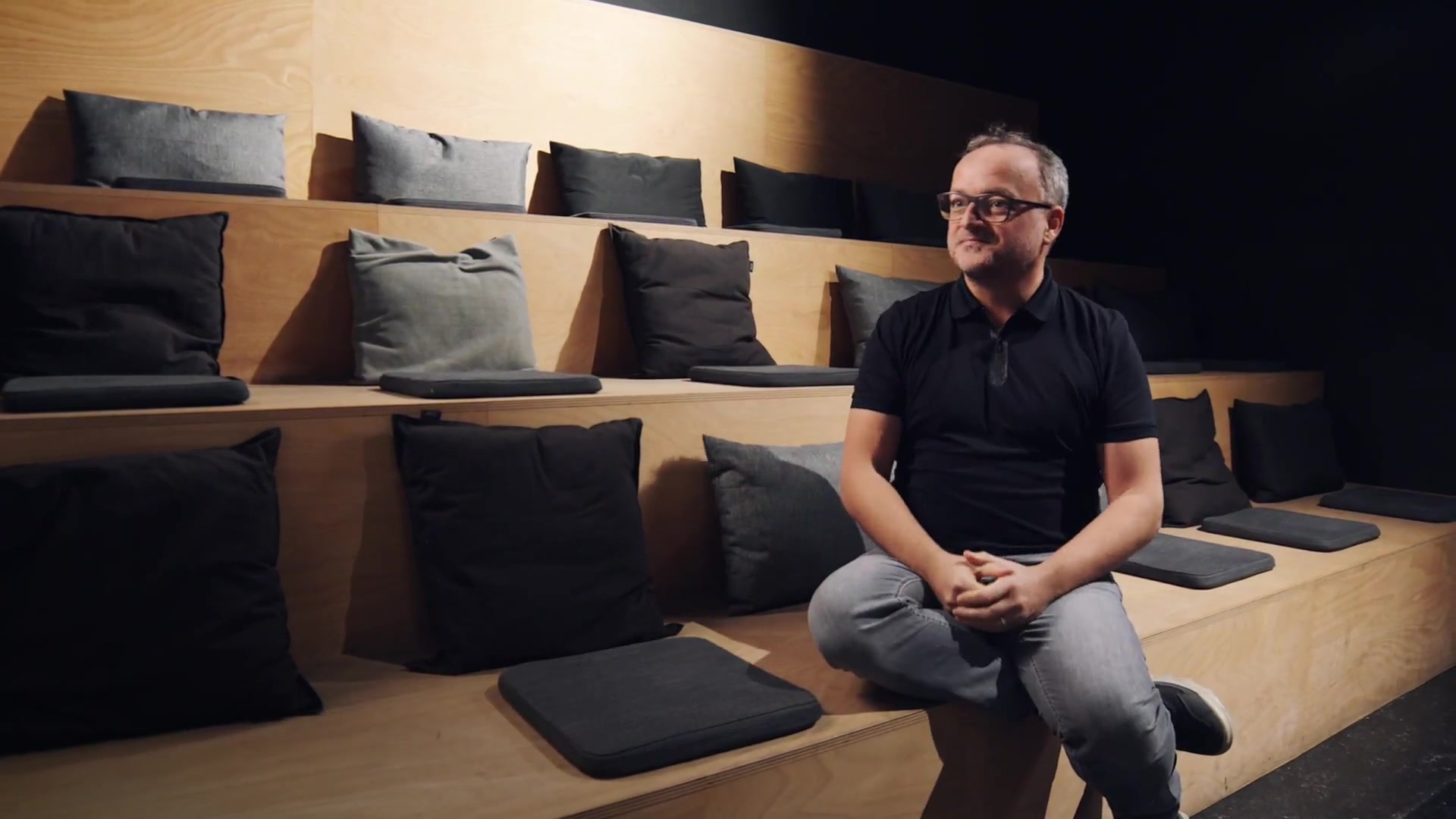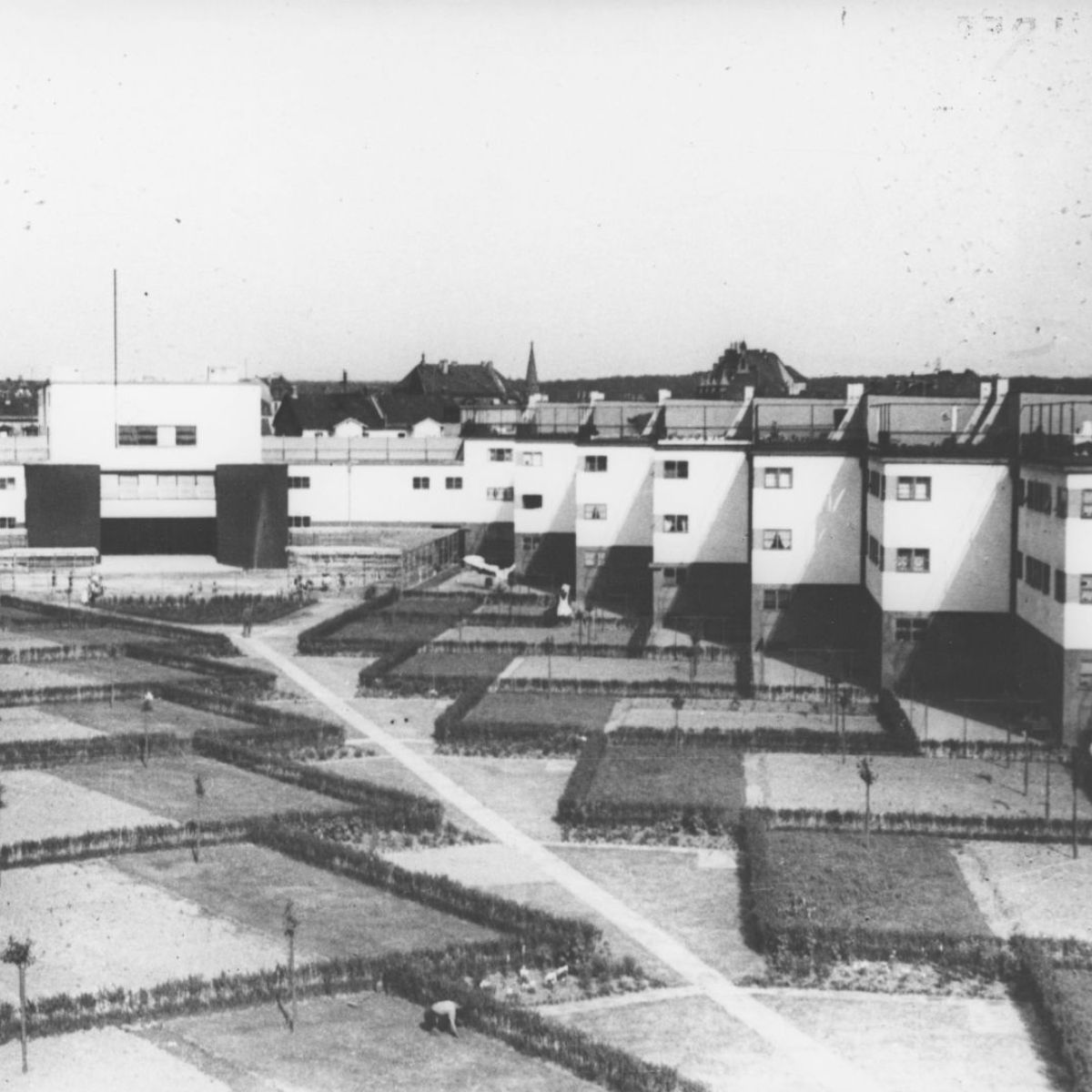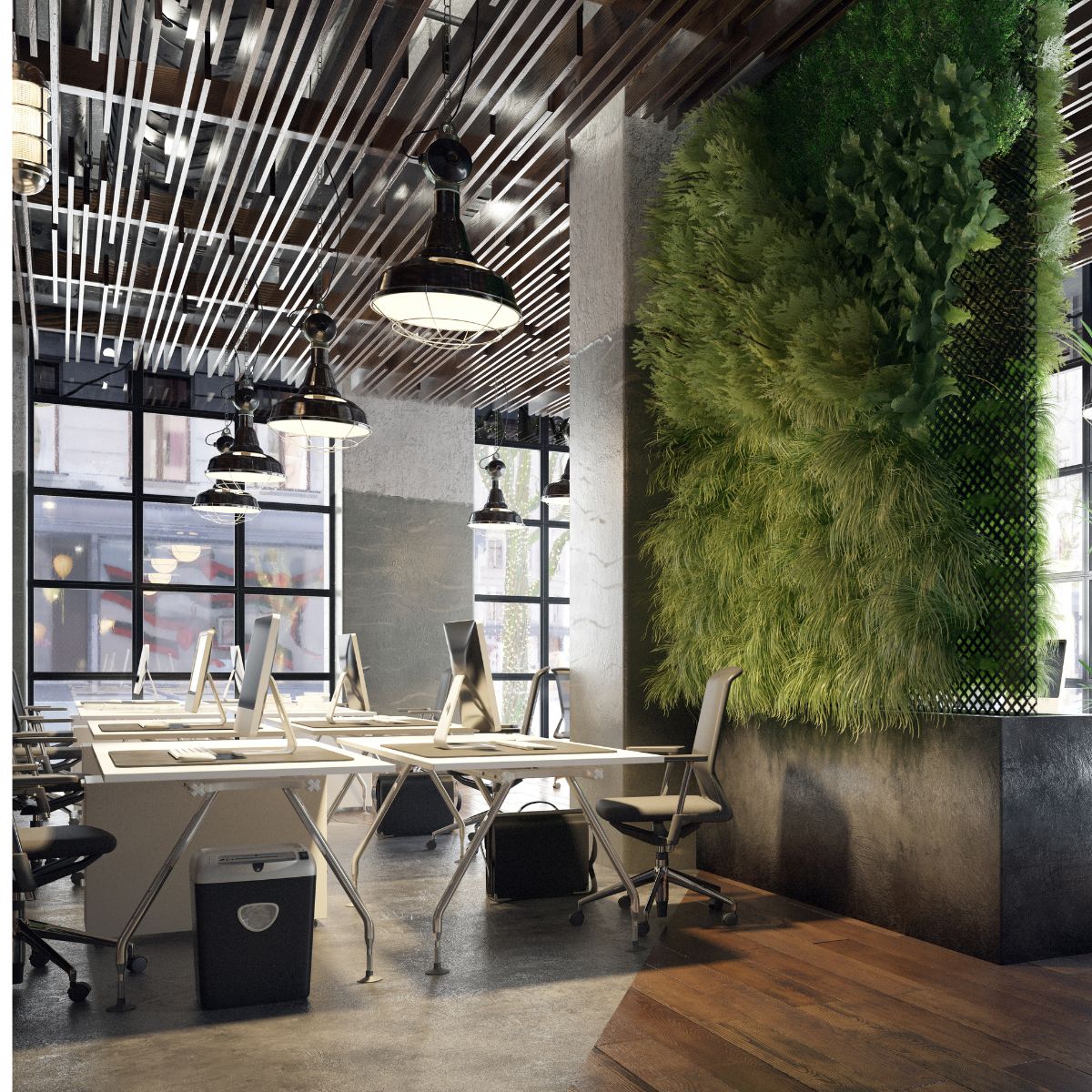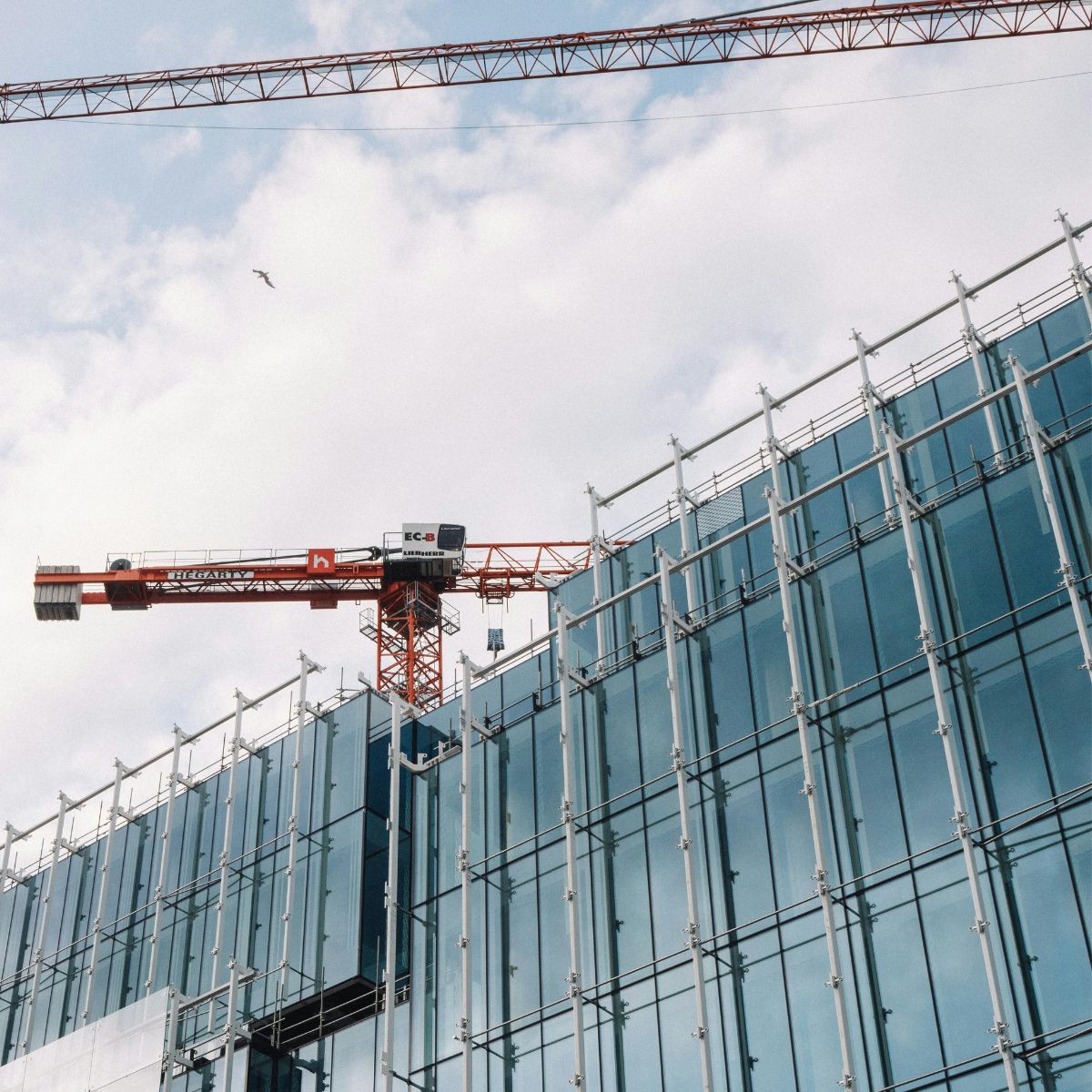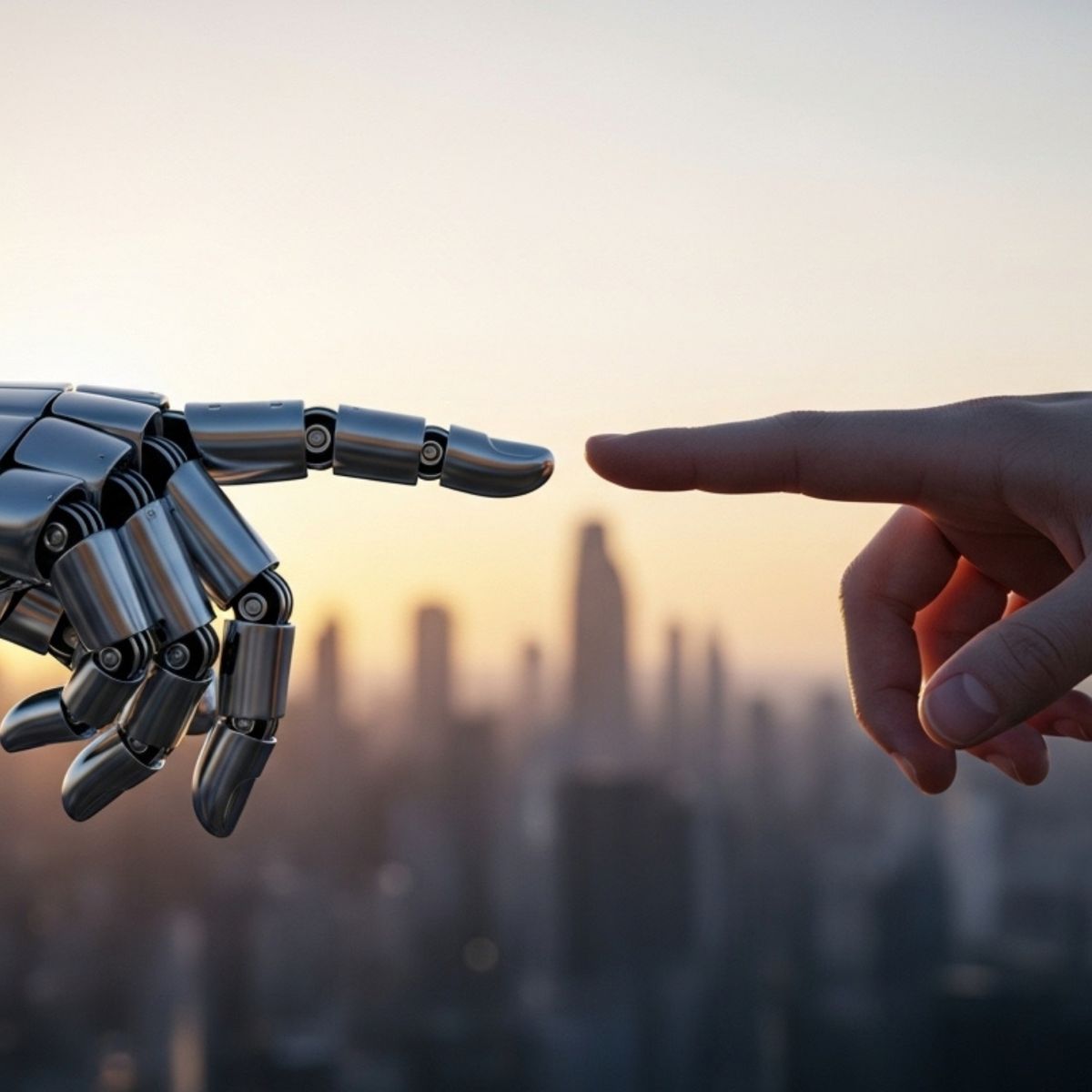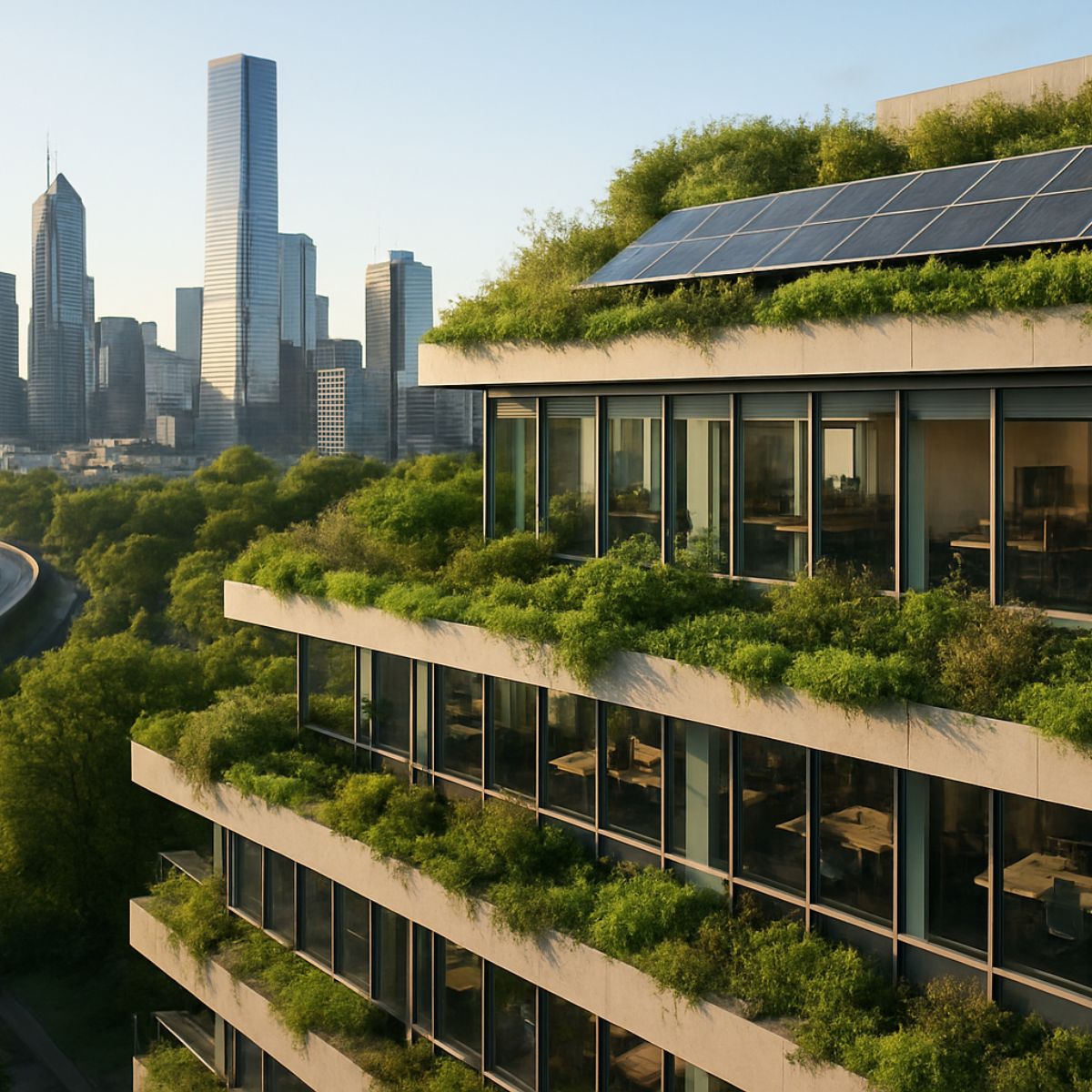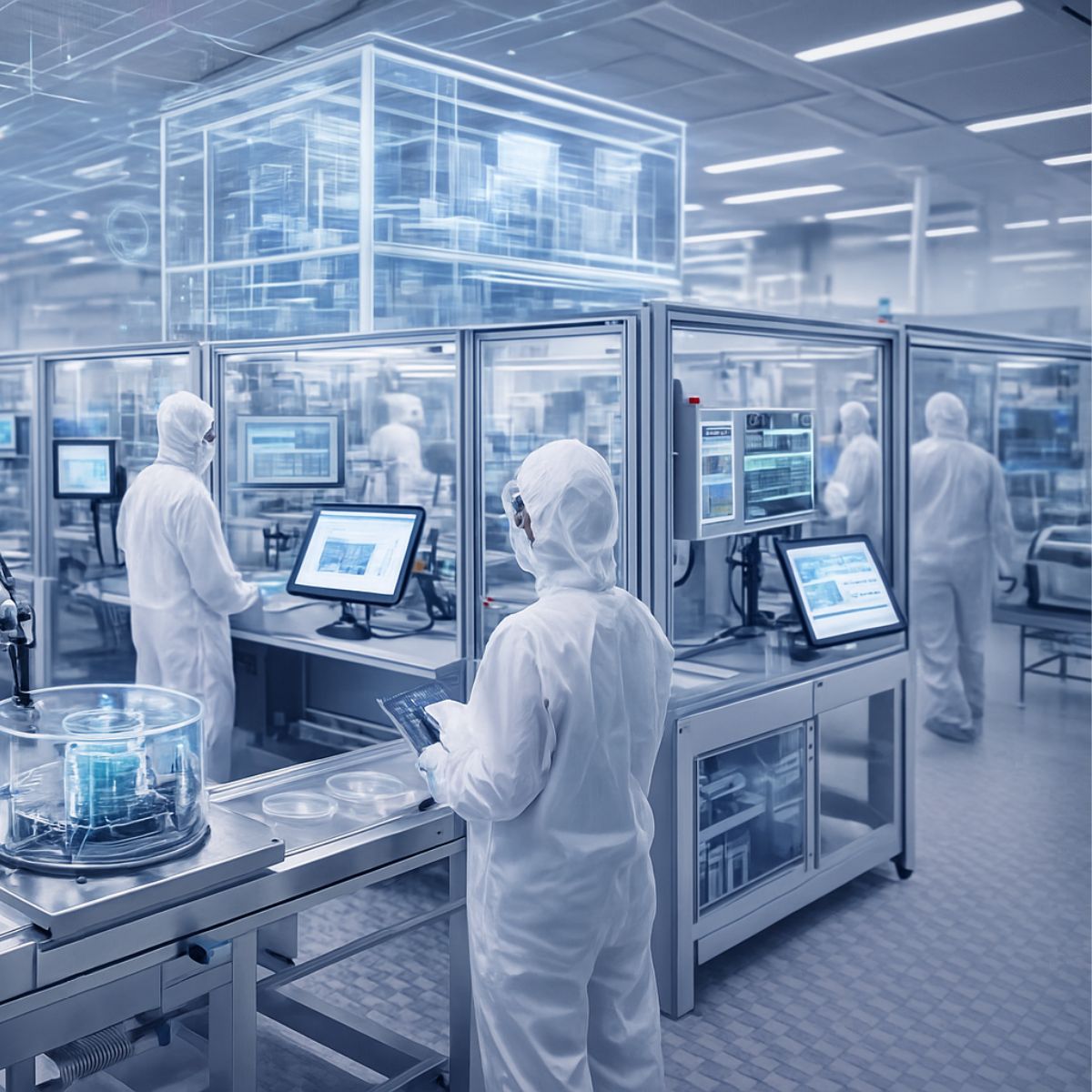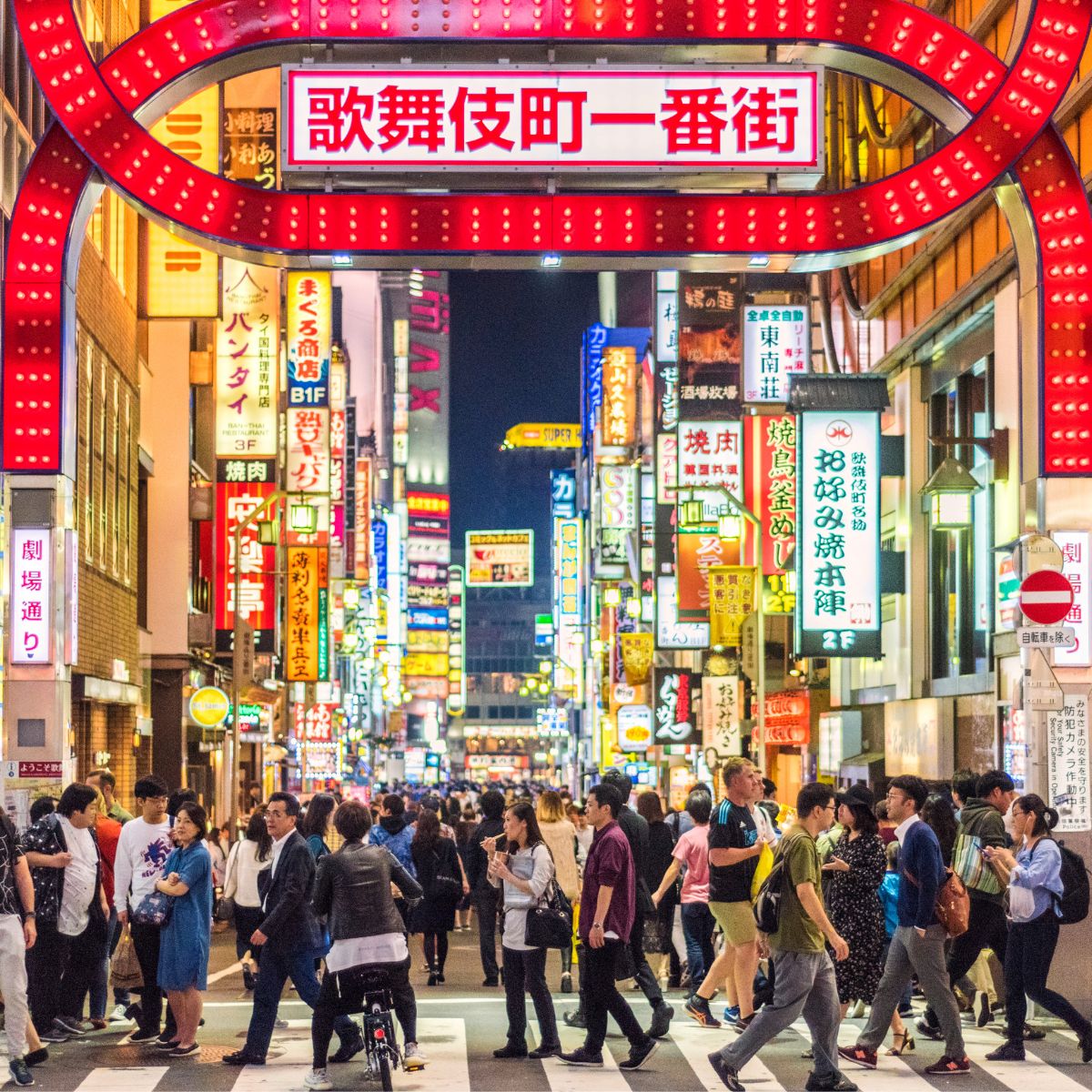Reading time: 12 minutes
Understanding the Trendmap
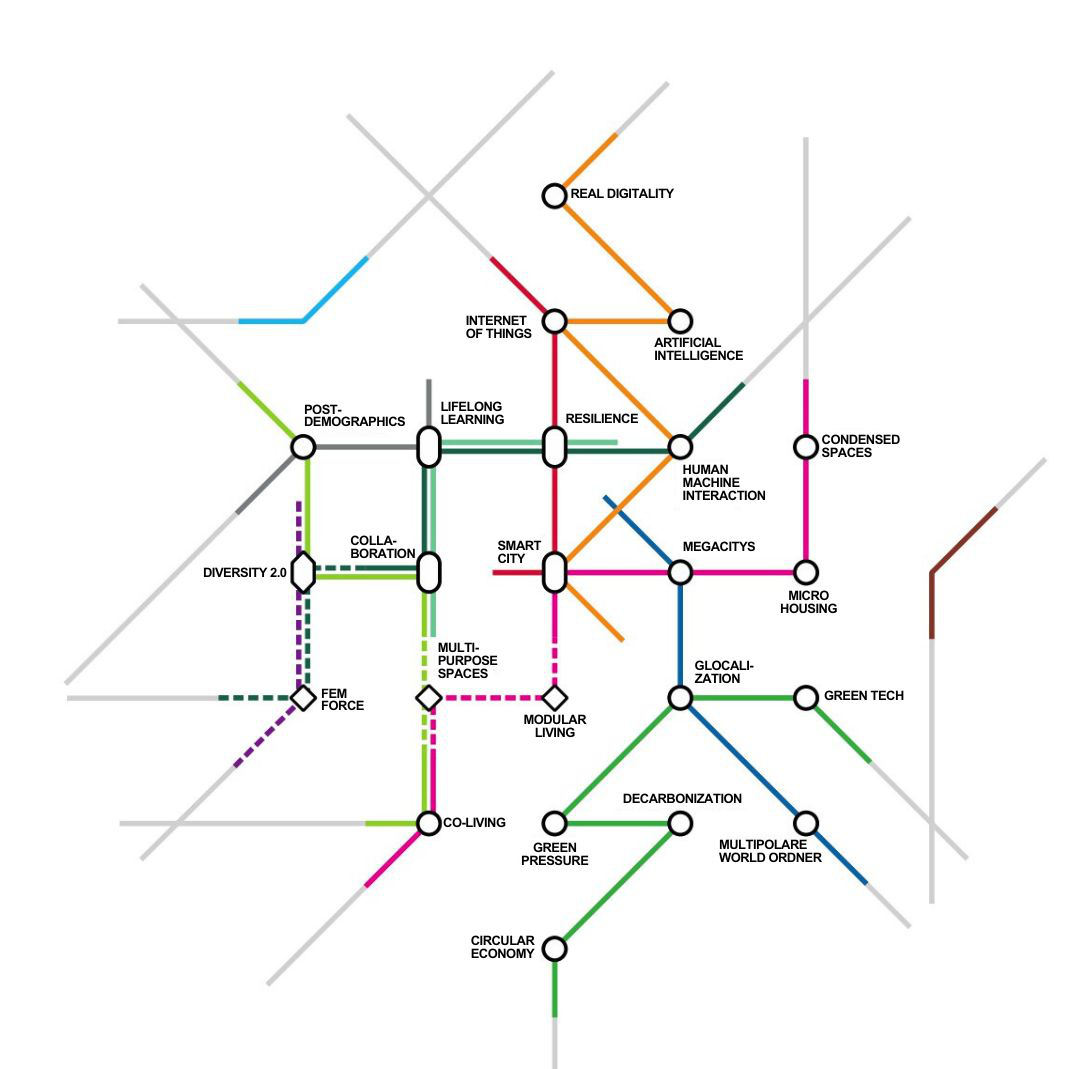
The pace of change in the building technologies sector is accelerating at an unprecedented rate. Urbanisation is concentrating populations into increasingly dense spaces, intensifying demand for housing, mobility, and public services. Climate change is pressing governments and industries to adopt sustainable resource use and low-carbon solutions. Digitalisation is redefining the way buildings are designed, managed, and experienced, while demographic shifts are reshaping how—and where—people choose to live.
These shifts are complex and interlinked. A new housing model can influence energy grids; a change in mobility patterns can redefine neighbourhood planning. To capture this interplay, we commissioned the Zukunftsinstitut—founded in 1998 and today one of Europe’s leading institutes for trend and future research—to create a customised Trendmap: a strategic orientation tool that visualises the connections between long-term societal, technological, and environmental dynamics. Unlike a static forecast, it shows how trends evolve, overlap, and trigger new patterns of change.
By linking global forces such as Neo-Ecology, Urbanisation, and Connectivity with the building industry’s most pressing challenges, the Trendmap creates a practical framework for decision-making. It is designed to guide architects, engineers, planners, and technology providers in aligning innovation efforts with emerging needs—whether in sustainable construction, smart city infrastructure, or inclusive urban spaces.
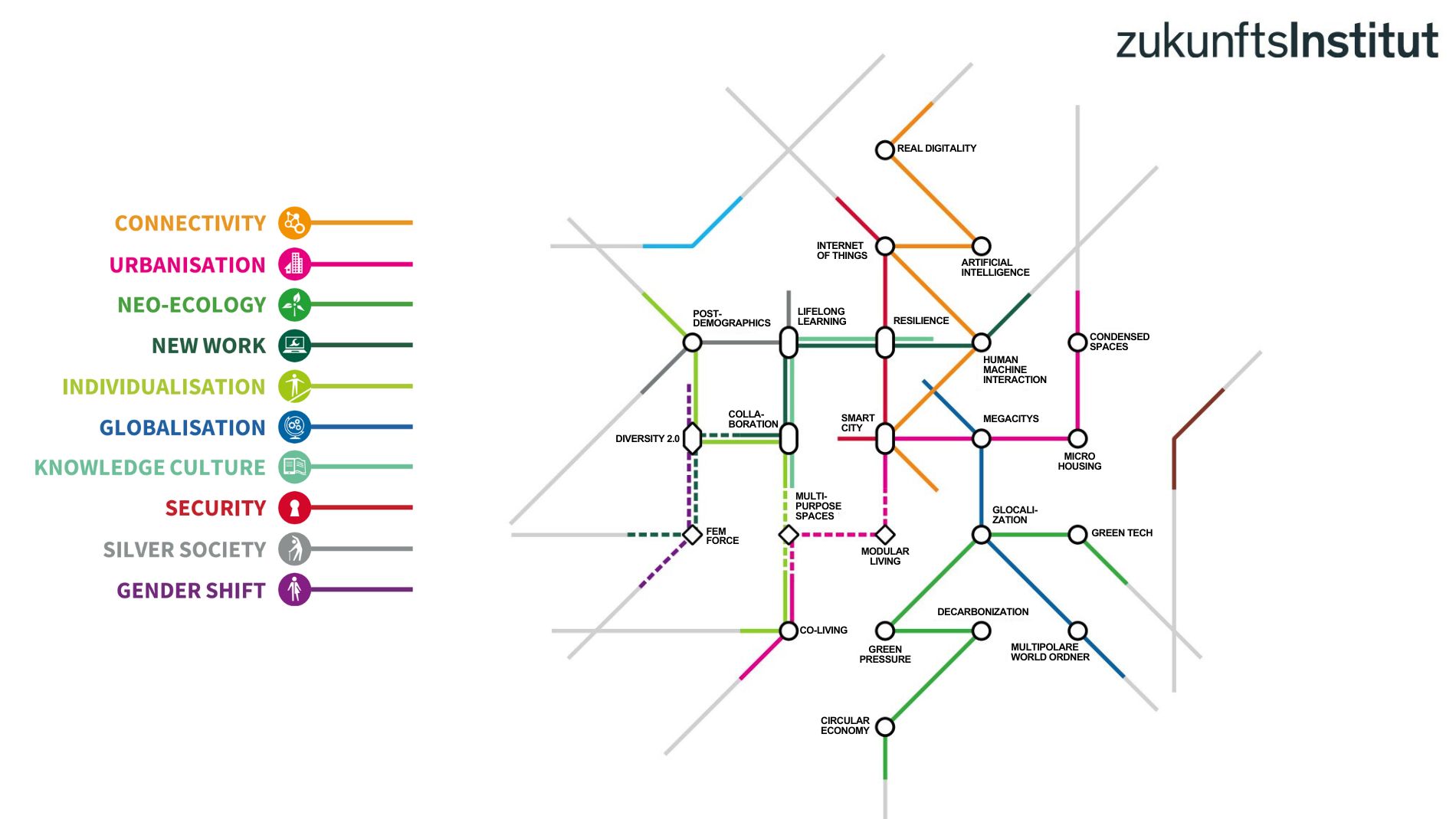
From Megatrends to Action Fields
The Trendmap is not a simple list of isolated developments—it is a system view. Each megatrend interacts with others, creating overlapping influences and feedback loops. For instance, Neo-Ecology intersects with Connectivity through smart energy networks and data-driven climate solutions, while New Work converges with Urbanisation in the rise of co-living spaces, modular office hubs, and hybrid work environments.
These intersections are where much of the innovation potential lies, but also where complexity increases. A technology breakthrough in one domain—such as AI in building automation—can reshape supply chains, workforce requirements, and even city governance models. Recognising these interdependencies is critical for making decisions that are resilient, scalable, and future-proof.
To make this complexity more actionable, the Trendmap distils its findings into four Fields of Action most relevant to the future of building technologies. These fields—Building Tech Cities, Built Environment, Restructured Living, and Joint Workforces—serve as strategic lenses. Each focuses on a distinct area of transformation, yet all are interconnected, reflecting the need for integrated approaches.
By understanding how these fields overlap, industry professionals can better identify where to invest, where to collaborate, and how to adapt to shifting market and societal expectations.
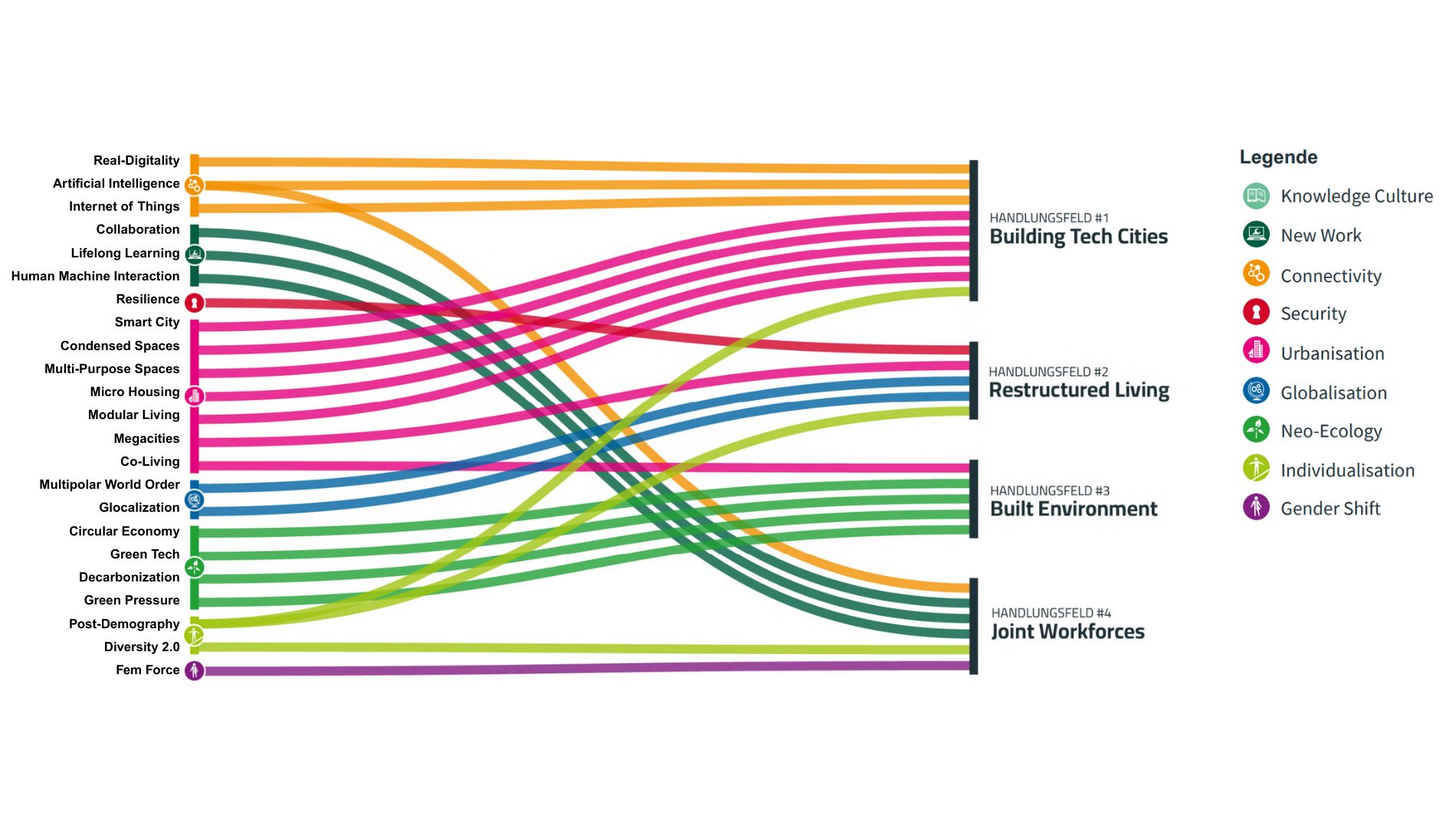
The Four Fields of Action
Building Tech Cities
Urban growth is accelerating, and the cities of tomorrow must be smarter, more adaptive, and more human-centred. Building Tech Cities integrate advanced Internet of Things (IoT) networks, artificial intelligence, multi-purpose spaces, and modular living concepts to optimise resources and improve quality of life. These cities go far beyond digital building control systems—they interconnect mobility networks, energy grids, public services, and environmental management into a seamless, responsive ecosystem.
A well-designed Tech City might use AI to analyse traffic flows in real time, reducing congestion and emissions. IoT-enabled buildings can communicate with the power grid, shifting consumption to periods of lower demand or drawing from on-site renewable sources. Public safety benefits from sensor-based early warning systems that detect hazards before they escalate.
The physical layout is equally important. Condensed Spaces and multi-purpose urban hubs ensure land is used efficiently, while micro housing and modular living units offer flexible, affordable options for diverse populations. Such spaces often integrate community functions—coworking areas, cultural venues, and green public zones—fostering both economic activity and social connection.
By uniting technology, design, and governance, Building Tech Cities become living systems capable of adapting to environmental pressures, economic shifts, and the evolving needs of their citizens.
Built Environment
The Built Environment includes every human-made structure that shapes daily life—from residential buildings to transport networks and public spaces. Its environmental footprint is enormous, accounting for a significant share of global energy use and carbon emissions. As climate change accelerates, the sector faces mounting pressure to adopt low-carbon, resource-efficient, and regenerative design approaches.
Decarbonisation is a central driver, achieved through renewable energy integration, passive building design, and efficient heating and cooling systems. The Circular Economy is redefining how materials are sourced, reused, and recycled—turning waste into a valuable resource and extending the life cycle of building components. Green Tech solutions, such as AI-driven energy optimisation and sensor-based water management, are making cities cleaner and more resilient.
Social sustainability is equally important. Co-living models, urban farming, and green public spaces promote inclusivity, health, and community engagement. When combined, these strategies help cities meet environmental goals while improving the quality of life for residents.
By aligning technological innovation with ecological responsibility, the Built Environment can move from being a major emitter to a net contributor to climate resilience and social wellbeing. For further insights, see the whitepaper “The Built Environment in Transition”.
Restructured Living
Global demographics, urbanisation, and shifting geopolitical landscapes are fundamentally reshaping where and how people live. Restructured Living responds to this transformation by promoting adaptable, culturally sensitive, and resilient urban environments.
In a multipolar world order, emerging economies like India, China, and parts of Africa are becoming new centres of innovation and investment. This is influencing housing demand, infrastructure priorities, and urban planning models. At the same time, megacities—urban areas with more than 10 million residents—are expanding rapidly, often merging into vast metropolitan regions. This creates both opportunities for economic growth and urgent challenges for sustainability, infrastructure, and public services.
Post-demography shifts the focus from age or traditional demographic categories to lifestyle-driven planning. This means designing spaces that can adapt to evolving family structures, migration patterns, and community needs. Resilience underpins it all—ensuring cities can withstand shocks, from economic downturns to climate-related disasters.
Restructured Living is about aligning global influence with local identity, creating cities that are globally connected yet deeply rooted in place.
Joint Workforces
The future of building technologies will be shaped as much by people as by innovation. Joint Workforces focuses on creating diverse, skilled, and tech-enabled teams that can address both current and future industry challenges.
Diversity 2.0 goes beyond representation—it actively leverages the unique skills, experiences, and perspectives of different genders, age groups, cultural backgrounds, and educational paths. According to McKinsey’s 2023 report “Diversity Matters Even More: The Case for Holistic Impact,” organizations with higher diversity not only achieve stronger financial performance but also foster greater innovation and project success. FemForce initiatives aim to tap into the underrepresented potential of women in construction and building services, encouraging them to lead and innovate.
Technology is another catalyst. Human–Machine Interaction brings robotics, AI-assisted planning, and automation into the workplace—not to replace human talent, but to augment it. From exoskeletons reducing physical strain to AI-powered design tools improving efficiency, technology can extend careers, improve safety, and raise the quality of output.
Collaboration across disciplines and sectors ensures that knowledge flows freely, while lifelong learning equips workers to adapt to evolving tools and methods. Together, these elements create a workforce that is resilient, innovative, and ready to lead the building technologies sector into the future.
Key Subtrends to Watch
Some subtrends cut across all four Fields of Action, influencing multiple layers of the built environment. Recognising and acting on these cross-cutting drivers can unlock opportunities for integrated solutions.
- Circular Economy – Moving from a “take–make–dispose” approach to a regenerative model where materials are designed for reuse, remanufacturing, or recycling. In practice, this could mean modular building components that can be easily disassembled, or sensor-enabled waste systems that monitor and optimise recycling rates. The result: reduced costs, lower environmental impact, and increased supply chain resilience.
- Post-Demography – Shifting the focus from traditional demographic categories (age, gender, income) to lifestyles and life stages. For example, intergenerational housing projects can bring students, working adults, and seniors together in shared spaces—maximising occupancy, fostering community, and improving resource efficiency.
- Human–Machine Interaction – Combining human skill with the precision and scalability of technology. In construction, collaborative robots can handle repetitive or dangerous tasks, allowing workers to focus on complex problem-solving. In facility management, AI can process real-time sensor data to predict maintenance needs before failures occur.
These subtrends highlight that sustainability, inclusivity, and technological integration are not standalone goals—they work best when pursued in tandem.
From Insight to Action
The Trendmap serves two roles: it is a compass, helping navigate the fast-changing intersection of global megatrends and industry-specific challenges, and a catalyst, sparking new ideas and collaborations.
For business leaders, it offers a framework for anticipating change, aligning investments with emerging priorities, and reducing the risks of strategic blind spots. For architects, engineers, and urban planners, it is a source of practical inspiration, helping address urgent issues like resource scarcity, urban density, and climate adaptation with innovative, future-ready solutions.

